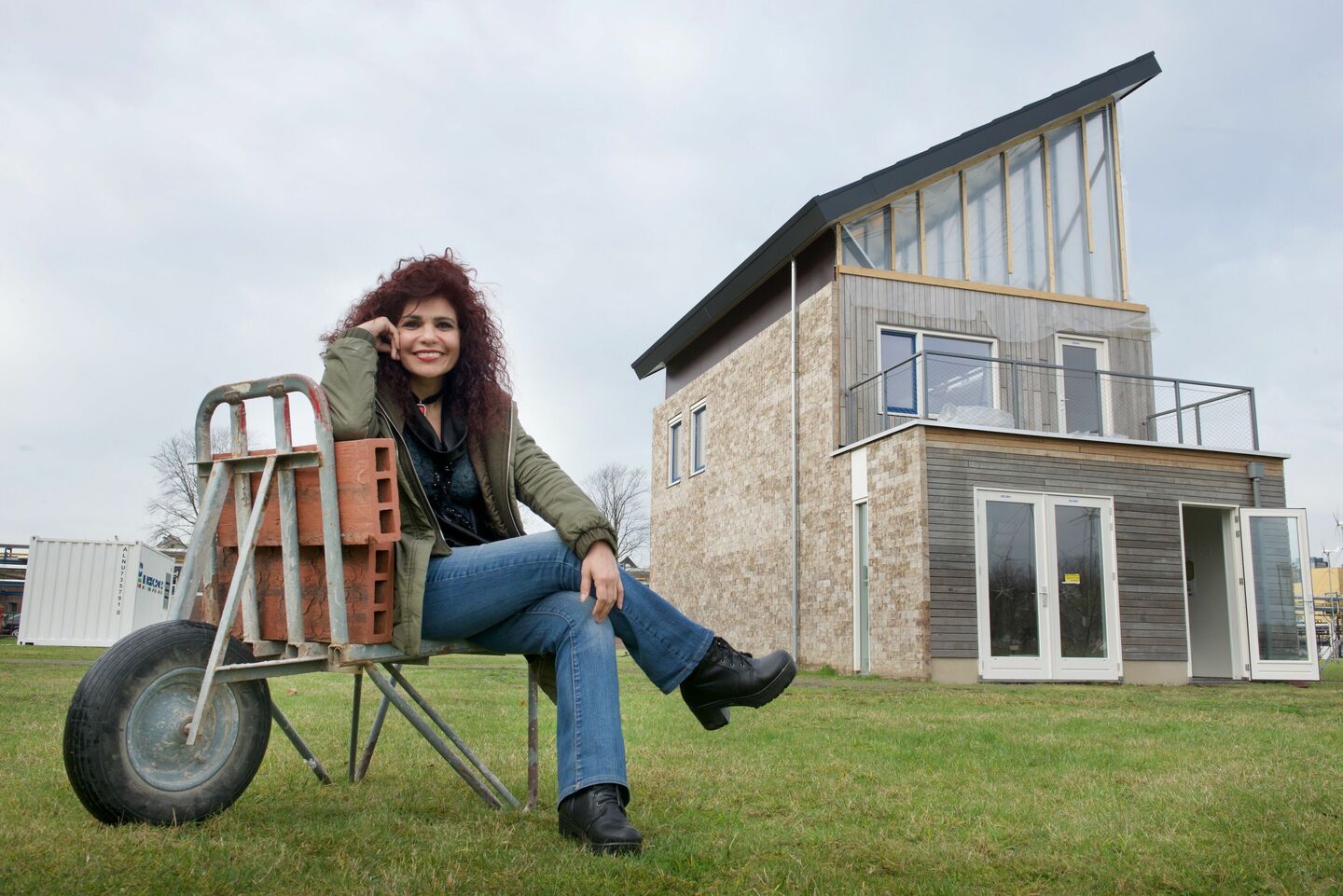
“The construction industry needs thoughtful doers”
Masa Mohammadi, professor of Smart Architectural Technologies at the Department of the Built Environment, claims that the way in which she and her group do research on new housing concepts and on innovations in nursing homes is unique, both nationally and internationally. She has gained much approval from the healthcare and construction sectors, combines her work at TU/e with a lectorate at the HAN, and establishes contact with other scientific disciplines. Mohammadi also sees how universities from abroad are becoming increasingly interested in the so-called living labs that offer PDEng students an opportunity to conduct research on what works or doesn’t work during a two-year traineeship on location. Cursor spoke to Mohammadi and visited projects in Roermond and Nuland.
In an ‘empathic home’ technology partly takes over the role of the informal caregiver, and seniors are stimulated to stay active longer. This is important because active seniors continue to live independently for a longer time, and that is exactly what the government is aiming for. In 2016 the group of Masi Mohammadi started in three ‘living labs’.
The results of these research projects is to provide organizations in the healthcare and building sectors with better insights into the successes and failures of innovations. PDEng researchers conduct for a two-year period research on location and give feedback. The participating partners - a business company, housing organization or healthcare institution - can directly benefit from this. Two projects that started in 2016 were completed recently, and a third will end this April (see articles below). New ‘labs’ are in preparation, and the aim is to start with four others soon.
Mohammadi and her group focus on an enormous variety of housing forms, from living independently with or without ambulatory care to living intramurally (permanently inside a healthcare facility). Mohammadi describes the activities of the PDEng researcher as “collecting evidence. They use different instruments for this, such as a diary, questionnaires and various kinds of sensors.”
Sometimes certain things are introduced that are supposed to have a soothing effect, only to find out later that the opposite is true
Solid research
According to Mohammadi, the construction industry is actively experimenting with new ways of housing, and several innovations have been implemented, but this is hardly ever preceded by solid research. “This means that a care home for people who suffer from dementia might introduce certain things that are supposed to have a soothing effect, only to find out later that the opposite is true. We don’t just look at these kinds of innovations, but we also try to translate them to the living environment. When you change the layout of a house, what will be the effect on the residents? What are the best dimensions?"
"In the coming years, the output of our research has to find its way to the construction industry, and the implementation of our findings will also be economically advantageous to their sector.”
Experiments lab
But even better than doing research on existing forms of housing or on already implemented innovations, would be to test them in advance. For this purpose, the University of Applied Sciences in Arnhem and Nijmegen (HAN), where Mohammadi has a lectorate, built an ‘empathic house’ in Arnhem, together with several external parties. “This is our experiment lab, researchers from TU/e are welcome here as well,” says Mohammadi. “We can test and develop ideas and innovations here that haven’t been marketed yet, and therefore haven’t been installed in houses or institutions either. This way, you make sure that you don’t produce and install things that eventually do not function in the way they were supposed to.”
PDEng researcher Anne Grave has been working on a project in the lab in Arnhem for a year now. The project is called Guided Environment, and its purpose is to develop an interactive living environment. It aims to integrate different technological innovations in order to create a house that ‘guides’ a person with dementia. Grave has conducted a needs assessment among people who suffer from Alzheimer’s disease as part of this project last year.
Mohammadi has also spoken with informal caregivers, healthcare professionals, designers and other experts. Her research forms the basis for further development of the interactive environment, which is realized in cooperation with several business partners and other organizations. The process of designing will start this year. This will result in an interactive living room which will be installed in the lab in Arnhem. An improved version of this prototype will eventually be implemented in care home the DrieGasthuizenGroep in Arnhem.
At this moment, the project receives a grant for small and medium-sized enterprises, the so-called RAAK-mkb subsidy. But Mohammadi aims for more. In cooperation with Milan Petkovic, professor of Secure Data Management at the Department of Mathematics and Computer Science, and Peter Baltus, full professor of Mixed-Signal Microelectronics at the Department of Electrical Engineering, she has applied for a 20 million euro grant to the European Research and Innovation program 2020.
Mohammadi also applied for a grant to the Netherlands Organisation for Scientific Research (NWO), and she wishes to collaborate with Maarten Steinbuch, robotics professor at the Department of Mechanical Engineering. “It would be great if we were to receive these grants,” she says, “because the impact of our research is enormous. It provides the construction industry with security when they implement innovations and it turns doers, which the people in the construction industry usually are, into thoughtful doers.”
Congress New Living
Tomorrow, Thursday January 31, the congress ‘Het Nieuwe Wonen’ (‘New Living’) will take place at TU/e. For the third year in a row, a wide range of relevant organizations will be presented with the most recent developments in this area. Researchers from Mohammadi’s group will also speak.
“An empathic building functions optimally when one doesn’t notice”
How do you build a practical house that offers comfort, security, and a warm social environment? A house that prioritizes the needs of those who live in it, making it a real home. PDEng Marije Sanders-Kortekaas from the Department of the Built Environment became part of a building project that puts ‘empathic living’ for seniors central stage.
Residential complex De Bredestaete in Roermond has 39 apartments divided over four stories, and a basement where occupants can stall their bicycles and other possessions. This social housing project for seniors was built in 1971. And it shows. After almost fifty years, the building is old and worn out.
Two years ago, owner Domus was faced with a question: renovate or build a new project? The housing organization took into account which criteria senior apartments are required to meet in the future. The main focus was not the developer or architect, but the future residents. What is their view on a comfortable home?
To find out, Domus sought the collaboration of the Department of the Built Environment in Eindhoven. Marije Sanders-Kortekaas was approached during her thesis stage to take part in the project. “I already had a job with an architecture firm, but this was a challenging project from which I could definitely learn a great deal.”
Juggling
In 2017, Marije started as PDEng for a period of two years. After she finishes her engineering traineeship in February, she will receive an official certificate which will look impressive on her resumé. More importantly, she will have gained a great deal of experience.
“Very often, a PDEng program consist of one year of courses followed by an assignment of one year. With the PDEng program Smart Buildings & Cities, these two parts overlap. That can be difficult at times, because everything comes your way at once. But you have a lot of freedom, you need to be self-reliant, and you learn how to juggle multiple tasks at once.”
The last two years have been mostly about her personal development. The courses about entrepreneurship, project development, simulation tests and energy issues were very welcome. But the process-orientated practice was especially valuable. “When you study architecture, it is freedom of design and creativity that matter. There are practically no constraints. Budget costs or a cost-benefit analysis hardly come into play, even though they can be decisive in daily practice.”
Other side of the table
De Bredestaete is a good example. Marije made an analysis of the building. She looked at the location (good), the structure, the façade and installations (bad), and the building’s layout and finishing (outdated).
Marije: “Some things you can’t change, such as the location, which is just fine for the De Bredestaete. Easily accessible and close to many necessary amenities and facilities. Other things, such as the structure, the façade and the installations can be adjusted, but that would be very drastic and therefore expensive. That rules out smaller adjustments to the layout and finishing.”
Conclusion: demolish and rebuild is more effective than to refurbish. Domus invited four architectural firms and asked them to express their ideas on an ‘empathic building.’ Marije became a member of the evaluation committee and suddenly found herself at the other side of the table, listening to presentations. “None of these four firms had ever heard of empathic building, so they had looked it up on the internet,” she says, laughing.
Demolition ball
At this point, many of the residents have already moved out. A plan is ready and later this year the first demolition ball will probably hit the walls of the De Bredestaete. As she walks through the building, Marije points out the deficiencies the seniors have to face. Such as the impossibly high doorstep between the bedroom and the balcony. Or the gloomy corridor with low ceilings, the dark basement, and the long indirect route to the courtyard garden.
Marije: “I asked the current residents for their opinion, and by way of comparison I also spoke to people who live in a modern senior housing complex. Their answers are usually related to the living environment. I’ve noticed that the residents often know what is wrong about their home instead of what is right.”
Marije took the response of the residents into account during deliberations with the architectural firm. The building volume, daylight, and the question whether each story should have a central room. “Domus specifically asks for my opinion. I also provide feedback on these themes to TU/e and asses other projects in order to find a solution.”
Does is really work?
Sometimes it is difficult to persuade an architect. Each detail of a design raises the question: does it really work? Marije admits, with a smile, that as a ‘newbie’ she did pose some difficult questions to experienced people. “When do you have to stop badgering? No, I purposefully don’t make a checklist with conditions for empathic living. I rather work by thinking logically, using critical questions from residents as a starting point.”
Now that her time in Roermond is over, she is itching to get to work as an architect herself. The transition from theory to practice that she has made as a PDEng has given her a taste for more. “An empathic building functions optimally when one doesn’t notice. So yes, that’s the direction I want to take.”
How not do it...
Most likely De Bredestaete will be demolished this year. What were the shortcomings the former residents had to deal with?
The Building
Four stories high with an elevator. That’s fine. But the building stands half a story above street level to create a basement underneath. That causes some problems. Such as the connection to the adjacent care home. To get from one building to the other, seniors need to walk up or down an incline. This is not easy for them.
The Stairs
This is an interesting flight of stairs. The architect who came up with an entrance like this must have been in very good shape. To many seniors, it is a hill that can’t be climbed. Luckily, there’s a ramp for wheelchairs at the side of the building that leads down to the basement. There, residents can take the elevator.
“Make sure the toilet is visible from the bed”
A group home for people who suffer from dementia can be improved with a few small adjustments. Joyce Fisscher, PDEng-trainee at the Department of the Built Environment, has put this into practice. “A space is never finished and the residents are a very diverse group,” is how she describes her experience.
Sint Jozefoord, hidden away in the woods near the village of Nuland, is a residential and nursing home for the elderly. The former convent offers local clients homecare, domestic care, daytime activities and home-delivered meals.
The name Sint Jozefoord suggests a religious background. And indeed, the place was built seventy years ago for nuns to spend their last days in comfort. Today, the former convent houses a total of 140 residents, 50 of which are nuns.
The building was extended with a new wing last year, and a new corridor is currently under construction. It is made mostly out of glass, and forms a beautiful bridge between past and present. The new building has three stories that accommodate six group homes with eight residents each.
Broadening horizons
Joyce Fisscher entered Sint Jozefoord two years ago. Not as a novice, but as a freshly graduated student from the Department of the Built Environment aiming to integrate the philosophy of empathic building in the process. “Construction had already started, but there was still room to intervene and make adjustments to the interior.”
Instead of looking for a job as an architect, Fisscher deliberately chose to work as a PDEng trainee. She considered the two-year project a challenge. “The studies, the research and the practical training are ideal. You prepare yourself professionally for a future career. You broaden your horizon enormously, especially in this field, where a number of architectural firms have specialized in designing health care institutions.”
Building budget
Of course, Joyce had to get used to her new role. All of a sudden she found herself on the ‘other’ side of the playing field, right next to the client. “You really get to see how all parties involved have their own interests to protect. There are plenty of nice ideas, but it usually ends with the question: how much does it cost? It’s quite a challenge to stay within the building budget with so many different demands. And then there’s the time pressure, because the building needs to be finished before a certain deadline.”
The idea of empathic building has taken root among some of the developers and builders, but once the budget starts to become tighter, some intentions do get lost from sight, Joyce concludes. Nevertheless, she did manage to put her stamp on the interior design of the new building.
When the new building was finished, a part of the residents from the convent moved in. The empty building they left is currently being modernized. “I could interfere with that right from the start,” Joyce says with a smile, “I was on board for a year already, and that makes a difference.”
She was partly responsible for dropping the idea of adding high windows from ceiling to floor. “That is confusing to people who suffer from dementia. We decided that a parapet beneath a window was necessary for these residents.”
Apparently, the bathroom toilet wasn’t a point of special interest for the architect either. It was located just around the corner, next to the doorway, as is usual in most average households. “But many residents of Sint Jozefoord are forgetful. To them, it’s important that they can see the toilet through the doorway from their bed. As a reminder to go to the toilet on time. It’s really very simple but exactly because of that, designers tend to overlook it.”
Not a checklist
In early April, Joyce will finish the project. She will give her final presentation and present a publication. In addition, she will unveil a ‘tool’ that can be used for the next renovation or new building plans at Sint Jozefoord. “It will not be a checklist. The tool should provide the means to stay close to the original demands of the design, as well as the needs of the residents. These tools are not static and the requirements are never set in stone. That wouldn’t be possible. A space is never finished and the residents are a very diverse group. There is constant motion and change.”
During the last months of her project, Joyce has been assessing whether her adjustments have been helpful to the residents. She does this based on research and some simple experiments. Serious scientific results are not expected. “It involves only a small number of residents, which makes it hard to substantiate.”
And yet, she does have the impression that small nuances make a living environment more comfortable, such as the door to each resident’s own room. “When I ask someone in the central gathering space to show me his or her room, I walk down the hall with them. It is not always without some effort, but eventually they do connect the dots and remember where ‘home’ is. That might not sound like much, but for people who suffer from dementia, as well as for their family and the personnel, it’s very significant.”
Text and photos | Frits van Otterdijk
Led cloud ceiling
A subtle play between led lights and printed panels creates an illusion of daylight. A bright blue sky with some white clouds turns the corridor into an open space. Because the effect is incorporated in the ceiling twice, the corridor doesn’t look quite as long anymore and the tunnel effect disappears.
Front doors and Memory cabinets
Besides the led cloud ceiling, the corridor has been brightened up with eight uniquely different front doors that give entry to the private rooms of the residents. Each door has a different shape, color and look. This makes it easier for a forgetful resident to locate his or her own room. The memory cabinets, with a nameplate, photographs and other personal items, help the residents to find their way back to their private room.
Invisible service doors
You can see them only after you’ve figured it out. The invisible service doors. They blend with the walls like chameleons. They practically have the same color and style as the walls. This creates a greater sense of calm for the residents, who do not have to worry whether their room is behind one of the doors. The invisible doors can only be opened by personnel.
Living painting
A living painting has been placed on the wall of the central room. A short, repeating video shows tropical fish in an aquarium, alternated with images of an idyllic landscape with waving reeds. It is a continuous scene of stillness that creates a ‘dynamic stimulus.’ The quiet movements on screen serve to reduce the agitation and unrest of the residents.
The Corridor
Thanks to all the adjustments mentioned earlier, three aspects are added to the corridor: daylight, a place to sit down and to experience. As a result, the corridor is not only a warmly decorated connecting route between the central room and the individual rooms, but also an extra residential space.

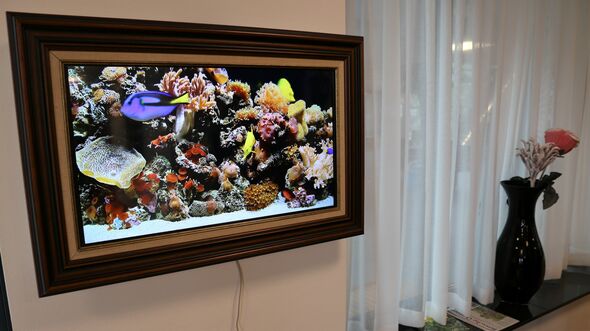
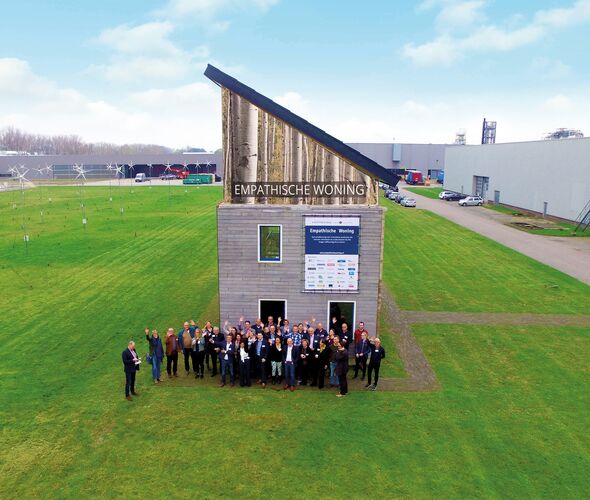
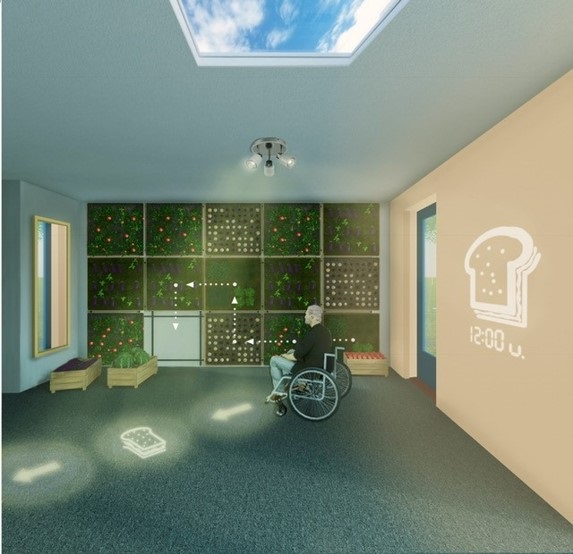
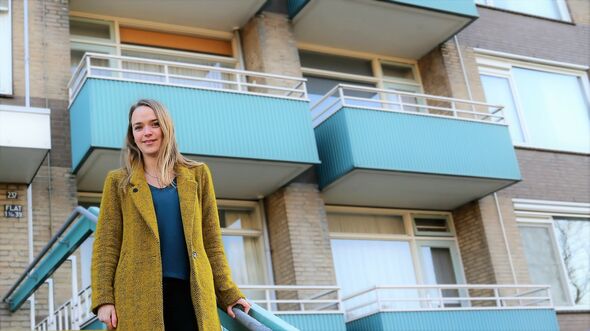
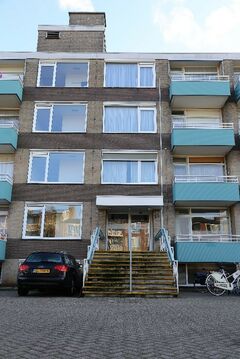
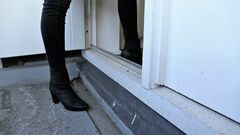
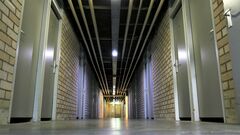
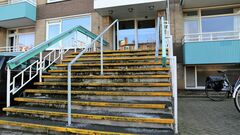
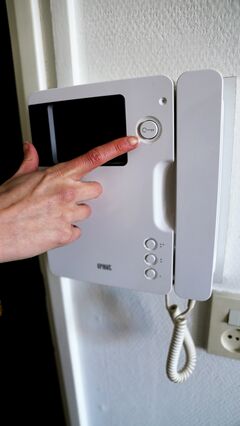
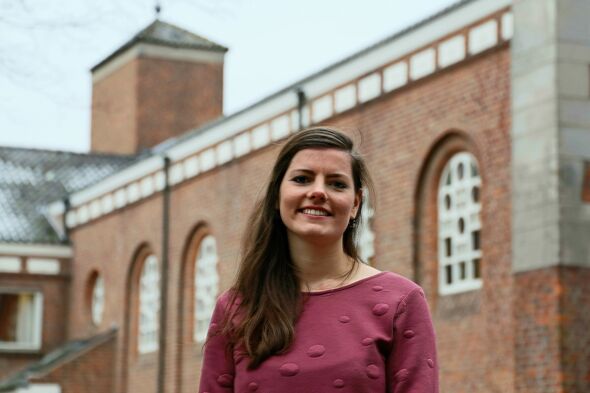

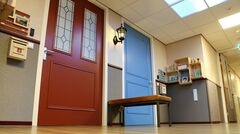
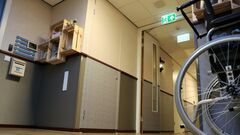
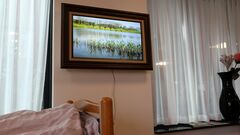
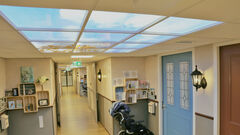
Discussion